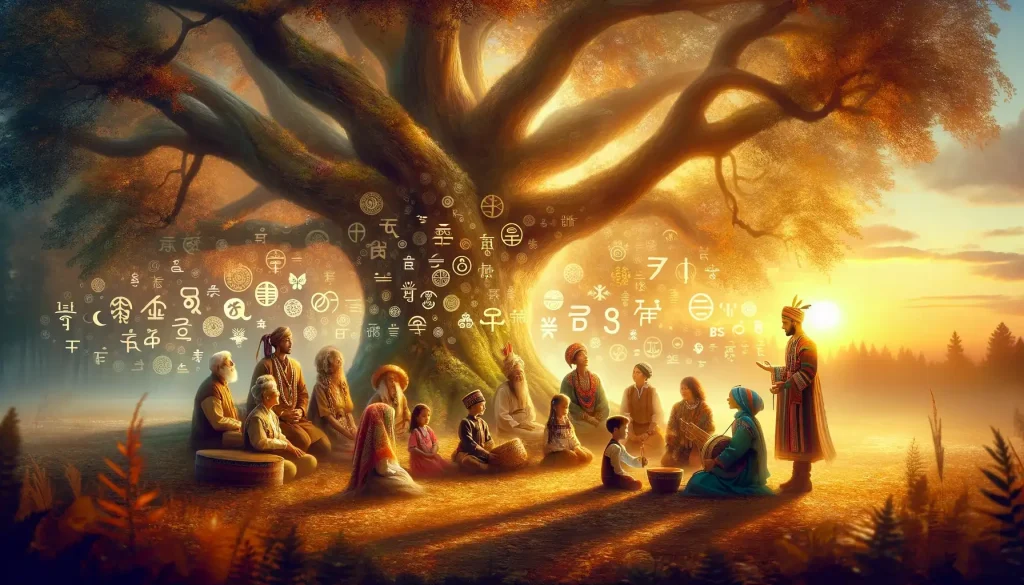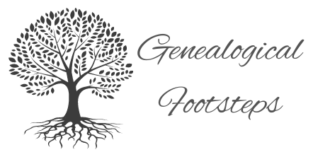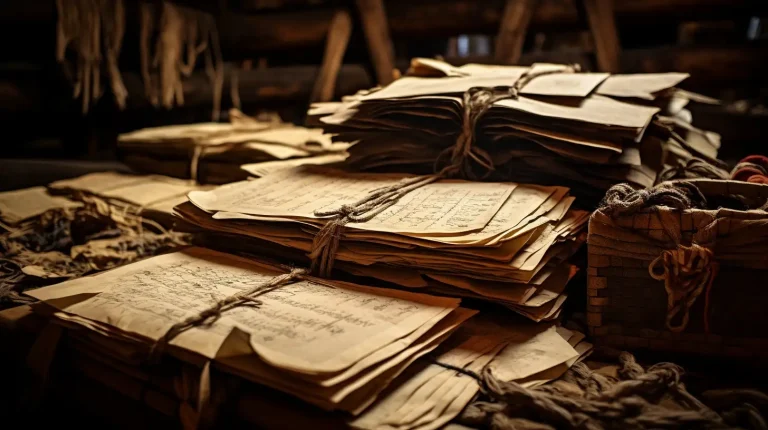Language is an essential aspect of cultural heritage. Ancestral languages are ancient dialects that have been passed down through generations, connecting individuals to their cultural roots and history. However, with the rise of globalisation, many ancestral languages are facing extinction, leading to a loss of linguistic heritage and cultural identity.
Preserving ancestral languages is crucial to keeping heritage alive. By maintaining these traditional tongues, individuals can connect with their ancestors and access historical idioms that are unique to their cultural heritage. In this article, we will explore the importance of preserving ancestral languages, the challenges faced in language preservation, and the strategies used to revitalise these languages.
Key Takeaways
- Ancestral languages are ancient dialects that connect individuals to their cultural roots and history.
- Preserving ancestral languages is crucial to maintaining linguistic and cultural heritage.
- The loss of linguistic diversity can have a significant impact on communities, highlighting the need for language preservation efforts.
To effectively preserve and revitalise ancestral languages, a multifaceted approach is necessary. Below is a detailed table outlining various strategies, their objectives, the resources needed, and the expected outcomes of each method, providing a roadmap for keeping our heritage alive through language.
| Strategy | Objective | Resources Needed | Expected Outcome |
|---|---|---|---|
| Language Classes | To teach the language to both young and old members of the community. | Qualified instructors, educational materials (textbooks, online courses), classroom or virtual learning environment. | Increased fluency within the community, with more people able to speak and understand the language. |
| Cultural Exchange Programs | To facilitate direct engagement with native speakers and immersion in the culture. | Partnerships with communities where the language is still spoken, funding for travel and exchanges. | Enhanced linguistic skills and deeper cultural appreciation among participants. |
| Digital Archives | To preserve and make accessible historical documents, recordings, and other materials in the language. | Digitisation equipment, archive management software, collaboration with historians and linguists. | A centralised repository of language resources available to learners, researchers, and the general public. |
| Storytelling Sessions | To keep oral traditions alive and foster intergenerational connections. | Venues for gatherings (community centers, online platforms), storytellers, audience engagement strategies. | Strengthened community bonds and transmission of language through oral tradition. |
| Multimedia Content Creation | To produce modern content in the language, such as podcasts, videos, music, and blogs. | Content creators, recording and editing equipment, distribution platforms (YouTube, Spotify, blogs). | Increased visibility and appeal of the language among the younger generation, making learning enjoyable. |
| Language Partners and Conversation Circles | To practice speaking and comprehension in a supportive, informal setting. | Organisation of groups, meeting spaces (physical or virtual), guidelines for participation. | Improved conversational skills and confidence among learners. |
| Cultural Festivals and Events | To celebrate and promote the language through music, dance, food, and traditional crafts. | Event organisers, performers, venue, promotional materials. | Public awareness and pride in the language and culture, attracting interest from both within and outside the community. |
| Educational Workshops for Educators | To train teachers in effective methods for language teaching, especially in immersive and interactive techniques. | Training materials, expert facilitators, collaboration with educational institutions. | A network of skilled educators equipped to inspire and educate new language learners. |
| Government and NGO Support | To secure funding, policy support, and public awareness campaigns. | Partnerships with government agencies, NGOs, and community leaders, grant writing expertise. | Financial and legislative backing for language preservation projects, ensuring sustainability and reach. |
This table encapsulates the essence of our collective effort to safeguard ancestral languages, highlighting that with the right strategies, objectives, and resources, we can achieve meaningful outcomes. By embracing these approaches, we ensure that the rich tapestry of our linguistic heritage continues to thrive, connecting us to our past and enriching our future.
What are Ancestral Languages?
Ancestral languages, also known as ancient dialects, are traditional tongues that have been passed down through generations. These languages are an essential part of a community’s cultural and linguistic heritage, providing a link to the past and helping to shape present-day identities. Ancestral languages come in a variety of forms, ranging from ancient linguistic traditions to more modern dialects that have evolved over time.
The historical significance of ancestral languages cannot be overstated. These languages have been used for countless generations, carrying within them the stories, myths, and traditions of entire cultures. They are often closely tied to a community’s way of life and sense of identity, providing a means of expressing cultural values and beliefs.
Preserving ancestral languages is crucial for maintaining linguistic diversity and promoting cultural heritage. Without these languages, much of the world’s linguistic and cultural richness would be lost forever. To ensure the survival of ancestral languages, it is important to understand their historical significance and the role they play in shaping cultural identity.
The Importance of Preserving Ancestral Languages
Preserving ancestral languages is crucial for maintaining cultural heritage and identity. Traditional tongues are not only a means of communication but also a way of sharing beliefs, values, and customs that have been passed down through generations. Linguistic heritage provides a deep understanding of history and culture, and the loss of ancestral languages could result in the disappearance of unique worldviews and ways of life.
As the world becomes more interconnected, many ancestral languages are at risk of disappearing due to the dominance of global languages and the decline of speaker populations. According to UNESCO, more than half of the estimated 6,000 languages spoken in the world today are endangered, and one language dies every two weeks. The loss of linguistic diversity can have a profound impact on communities, leading to a loss of cultural identity and a weaker sense of belonging.
The Importance of Preserving Ancestral Languages
Preserving ancestral languages is not only important for cultural heritage, but also for cognitive development. Research has shown that learning a second language can have cognitive benefits such as improved memory, problem-solving skills, and creativity. In addition, speaking an ancestral language can have positive effects on mental health and well-being, providing a sense of connection to one’s roots and community.
Furthermore, ancestral languages provide a unique perspective on the world and can offer insights into alternative approaches to life. This diversity of thought and expression is crucial for fostering creativity, innovation, and understanding across cultures. By preserving ancestral languages, we can create a richer and more inclusive global community.

Challenges in Preserving Ancestral Languages
Ancestral languages face several challenges in their preservation. Indigenous speech communities, where ancestral languages are commonly found, often lack resources and support to maintain them. There is limited documentation of many ancient dialects, leading to difficulty in preserving and passing on linguistic heritage to future generations. Additionally, there is a decline in the number of people who speak traditional tongues, further endangering their survival.
The lack of documentation of ancestral languages makes it challenging to teach aspects of the language, such as grammar and syntax, and to develop language learning resources. As a result, it is often challenging to teach these ancient linguistic traditions to children, who may not have access to native speakers. It also becomes difficult to preserve the many dialects of a single language, as each dialect may have unique nuances and vocabulary that need to be documented and passed on.
Another significant challenge is the limited resources invested in preserving ancestral languages. As a result, it becomes difficult to develop and sustain language revitalisation programs, which would otherwise enable communities to preserve and promote their languages. In some cases, communities may not even have access to formal education in their ancestral language, making it challenging to pass on linguistic heritage to future generations.
Challenges in Preserving Ancestral Languages: The Decline in Speaker Populations
The number of people who speak ancestral languages is declining at a rapid pace. As mentioned above, nearly half of the world’s languages are endangered, with one language dying every two weeks. This decline in speaker populations can be attributed to several factors, including globalisation, urbanisation, and language suppression policies in the past.
For example, in many countries, the national language is given priority over indigenous speech, leading to a decline in the use of ancestral languages. Urbanisation further exacerbates this trend as people move away from their ancestral lands and adopt the national language of their new home. This trend leads to a gradual decline in speaker populations, which, in turn, makes it even more challenging to preserve ancestral languages.
Strategies for Preserving Ancestral Languages
The preservation of ancestral languages is crucial for maintaining cultural heritage. There are various strategies that can be implemented to ensure the survival of historical idioms.
Language Revitalisation
Language revitalisation programs can support the continued use and development of ancestral languages. These programs aim to create opportunities for community members to use the language in daily life. Language immersion programs, for example, can provide an environment for learners to practice speaking the language and improve their fluency. Documentation projects can also support language revitalisation efforts by recording and preserving ancestral languages for future generations.
Community Engagement
Community engagement is a critical aspect of preserving ancestral languages. When communities are actively involved in language preservation efforts, they are more likely to understand the importance of language and cultural heritage. Community-led language revitalisation projects, such as workshops and cultural events, provide opportunities for community members to come together, share knowledge, and practice their ancestral languages.
Collaboration with Linguists and Experts
Linguists and experts can provide valuable support and expertise in language preservation efforts. Collaboration with these professionals can enhance language documentation and linguistics research. It can also establish strong links between academic research and community-led efforts to revitalise ancestral languages.
Use of Technology
The use of technology can support language preservation and revitalisation efforts. Digital tools, such as language learning apps and online resources, can facilitate language learning and provide access to language materials. Additionally, social media and other communication technologies can help to connect individuals and communities who speak the same ancestral language.
Revitalising Ancestral Languages in the Digital Age
The digital age has ushered in new opportunities for ancestral communication and language revitalisation. As technology continues to advance, so do the ways in which ancestral languages can be preserved and passed on to future generations.
Language learning apps and online resources have become powerful tools for language revitalisation efforts. These digital tools allow for self-paced learning and can reach a wider audience than traditional language classes. Additionally, social media platforms offer opportunities for ancestral language speakers to connect with one another and share knowledge.
However, it is important to note that these digital tools should not replace face-to-face interaction and community engagement. In-person language immersion programs and community events remain essential for maintaining the cultural and social context of ancestral languages.
Celebrating Ancestral Languages: Cultural Events and Festivals
Cultural events and festivals provide valuable opportunities to celebrate and promote ancestral languages as part of our linguistic heritage. These events offer a platform for showcasing the beauty and richness of primordial tongues, and also act as a means of fostering community bonding and cultural exchange.
In many communities, cultural events and festivals are a vital part of the calendar year and are looked forward to with great anticipation. They provide a space for people to come together to celebrate their traditions and to learn more about their heritage.
For ancestral language communities, cultural events and festivals provide a unique opportunity to promote and revitalise traditional idioms. These events often feature showcases of traditional songs, dances, and storytelling, which help keep ancestral languages alive and spark an interest in younger generations to learn more about their linguistic heritage.
“Cultural events and festivals provide a unique opportunity for ancestral language communities to come together to celebrate their linguistic heritage and to foster cultural exchange.”
Furthermore, cultural events and festivals can be a space for language revitalisation efforts. Language immersion programs, workshops, and other interactive language learning activities can be incorporated into these events to encourage and support the use of ancestral languages.
Examples of cultural events and festivals that celebrate ancestral languages include the indigenous language festival, held annually in British Columbia, Canada, and the Tuku Iho exhibition, a showcase of Maori culture, language, and customs that tours New Zealand and the world. Such events can help to raise awareness of the importance of linguistic diversity and the significance of ancestral languages in maintaining cultural identity and heritage.

Ancestral Languages in Education
The importance of ancestral languages in education cannot be overstated. Incorporating ancient linguistic traditions into curricula can provide many benefits for both language learners and their communities.
Research has shown that learning ancestral languages can improve cognitive skills, such as problem-solving and critical thinking, and can enhance cultural awareness and appreciation. Additionally, it can help preserve linguistic heritage and promote cross-generational communication.
However, implementing language programs can be challenging. Limited resources, declining speaker populations, and lack of documentation are significant obstacles. Successful language revitalisation in educational settings often requires collaboration between communities, educators, and policymakers.
Examples of Successful Language Revitalisation in Education
Despite the challenges, there have been successful examples of ancestral language revitalisation in educational settings. In Wales, for example, the Welsh Language Act of 1993 made Welsh a compulsory subject in all schools, leading to increased language proficiency and usage. In Hawaii, the Punana Leo language immersion program has been successful in revitalising the Hawaiian language by providing immersive language learning for young children.
Such initiatives demonstrate the importance of integrating ancestral languages into education and highlight the potential for language revitalisation efforts to succeed.
The Importance of Preserving Ancestral Languages
Ancestral languages are not just words; they carry the history, culture, and traditions of the people who speak them. These traditional tongues are part of our linguistic heritage, representing the rich diversity of human language. The preservation of ancestral languages is crucial to retaining our identity and cultural heritage.
Many ancestral languages are endangered, and their extinction could result in the loss of unique cultural perspectives and knowledge. Linguistic diversity is essential for the survival of our planet’s cultural diversity. Ancestral languages are integral to our understanding of history, philosophy, and the identity of indigenous communities.
The Significance of Ancestral Languages
Ancestral languages are an essential aspect of cultural identity, and their preservation contributes to the overall well-being of communities. The loss of ancestral languages can lead to the loss of traditional practices, beliefs, and knowledge that have been passed down from generation to generation for centuries.
These languages have a significant impact on personal, social, and cultural aspects of daily life. They are a means of communication, a source of cultural pride, and a symbol of the community’s identity. Language is a tool for expressing emotions, storytelling, and cultural rituals.
The Importance of Language Diversity
Linguistic diversity is an essential aspect of cultural diversity and can benefit individuals, communities, and societies. Language diversity promotes tolerance, respect for cultural differences, and can strengthen social cohesion.
Cultural diffusion, the spread of cultural ideas and practices, occurs through linguistic diversity. This phenomenon facilitates cross-cultural communication and promotes the exchange of ideas, leading to innovation and progress. The preservation of ancestral languages is crucial to maintaining linguistic diversity and promoting cultural exchange.
Protecting Ancestral Languages
Efforts to preserve ancestral languages are essential and require a multi-faceted approach. The process involves the documentation, revitalisation, and promotion of these languages.
Language documentation involves the collection of language data, including grammar, vocabulary, and pronunciation, which can be used to create language learning materials. Language revitalisation efforts can include language immersion programs, community engagement, and culturally sensitive educational programs.
Ancestral Languages – Conclusion
The importance of preserving ancestral languages cannot be overstated. The loss of these traditional tongues can have far-reaching consequences for our cultural heritage and identity. Ancestral languages provide a window into our past, shaping our present and future. By protecting and revitalising these languages, we ensure their survival for future generations and maintain the linguistic diversity that enriches our world.

My name is Anthony, the founder of Genealogical Footsteps. I have over 20 years of dedicated experience in family history and genealogy (although I am not a professional genealogist). I hold BA in history, and am considering further education (despite my age). My journey in genealogy has led me to remarkable discoveries and projects, particularly where my Cypriot genealogy is concerned. I am passionate about uncovering the stories behind names and have helped friends and family connect with their heritage, including those with Cypriot, Celtic, and Viking ancestry. Click here to read more about me.


